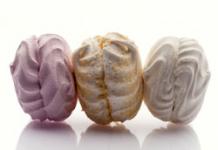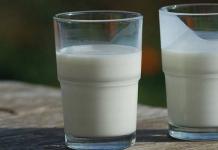Valsartan: instructions for use and reviews
Latin name: Valsartan
ATX code: C09CA03
Active substance: valsartan (valsartan)
Producer: Maylen Laboratoriz Limited (India), KRKA (Slovenia), Zhuhai Rundumintong Pharmaceutical Co., Ltd., Livzon Group Changzhou Kony Pharmaceutical Co., Second Pharma Co. (China), Ozon LLC, Atoll LLC, Obolensky Pharmaceutical Enterprise (Russia)
Description and photo update: 19.08.2019
Valsartan is an angiotensin II receptor antagonist.
Release form and composition
Dosage forms:
- film-coated tablets: round, biconvex, light pink, the core is almost white or white, in tablets at a dose of 40 mg and 80 mg - a dividing line on one side (7, 10, 14, 20, 28, 30 or 56 pcs in a blister pack, in a carton box 1, 2, 3, 4, 5, 6, 8 or 10 packs, 7, 10, 14, 20, 28, 30, 40, 50 or 100 pcs. in a polymer jar, in a cardboard bundle 1 bank);
- capsules: hard gelatin, opaque, size No. 2 (capsules 20, 40, 80 mg), size No. 0 (capsules 160 mg); capsules 20 mg - light yellow, body - with a beige tint, cap - with a cream tint; capsules 40 mg - body and cap light yellow with a creamy tint; capsules 80 mg - body and cap light yellow with a beige tint; capsules 160 mg - light brown body and cap (10, 20 or 30 pieces in a blister pack, in a carton box 1, 2, 3, 4, 5 or 10 packs; 10, 20, 30, 40, 50 or 100 pieces in a polymer can, in a cardboard bundle 1 can).
1 tablet contains:
- active ingredient: valsartan - 40 mg, 80 mg or 160 mg;
- auxiliary components: microcrystalline cellulose, croscarmellose sodium, colloidal silicon dioxide, magnesium stearate;
- shell composition: Opadry pink (macrogol-3350, polyvinyl alcohol, talc, titanium dioxide, iron dye yellow oxide, iron dye red oxide).
1 capsule contains:
- active ingredient: valsartan - 20 mg, 40 mg, 80 mg or 160 mg;
- auxiliary components: microcrystalline cellulose, croscarmellose sodium, povidone K17, colloidal silicon dioxide, magnesium stearate;
- the composition of the body and capsule caps: gelatin, iron dye yellow oxide, iron dye red oxide, titanium dioxide; in addition, in capsules at a dose of 160 mg - iron dye black oxide.
Pharmacological properties
The drug is characterized by antihypertensive properties.
Pharmacodynamics
Valsartan is an active, specific angiotensin II receptor antagonist intended for oral administration. It selectively blocks the AT 1 subtype receptors responsible for the effects of angiotensin II. As a result of this blockade, the concentration of angiotensin II in the blood plasma increases, which can lead to stimulation of unblocked AT 2 receptors. For valsartan, agonistic activity against AT 1 receptors of any severity is uncharacteristic. The affinity of this substance for AT 1 subtype receptors is approximately 20,000 times higher than for AT 2 subtype receptors.
The risk of coughing during treatment with the drug is very low, due to the lack of effect on the angiotensin-converting enzyme (ACE), which is responsible for the degradation of bradykinin. When comparing valsartan with an ACE inhibitor, it was found that the incidence of dry cough attacks was significantly lower in patients taking valsartan compared to patients taking an ACE inhibitor (2.6% and 7.9%, respectively). In the group of patients who previously had a dry cough during therapy with an ACE inhibitor, this complication was observed in 19.5% of cases when using valsartan, and in 19% of cases when using a thiazide diuretic, while in the group of patients who underwent a course therapy with an ACE inhibitor, cough was reported in 68.5% of cases.
Valsartan does not interact with and does not block ion channels or other hormone receptors that play an important role in the regulation of work of cardio-vascular system. Treatment with this drug in patients with arterial hypertension is accompanied by a decrease blood pressure, which does not lead to a change in heart rate.
After oral administration of a single dose of valsartan in most patients, the antihypertensive effect is recorded within 2 hours, and the peak decrease in blood pressure is observed after about 4-6 hours. After taking medicinal product the antihypertensive effect persists for approximately 24 hours. With repeated appointment of valsartan, the maximum reduction in blood pressure, regardless of the dose taken, is achieved on average within 2-4 weeks and remains at the achieved level during a long course of therapy. When this drug is combined with hydrochlorothiazide, there is an additional decrease in blood pressure, confirmed by reliable clinical data. Sudden withdrawal of valsartan does not lead to a sharp increase in blood pressure or other undesirable consequences.
The mechanism of action of the drug in chronic heart failure is its ability to eliminate Negative consequences chronic hyperactivation of the renin-angiotensin-aldosterone system (RAAS) and its main effector - angiotensin II. These include vasoconstriction, stimulation of excessive synthesis of hormones that have a synergistic effect with respect to the RAAS (endothelin, catecholamines, vasopressin, aldosterone, etc.), cell proliferation, which causes remodeling of target organs (kidneys, blood vessels, heart), fluid retention in the body . In patients with chronic heart failure, while taking valsartan, cardiac output increases, diastolic pressure decreases in pulmonary artery and wedge pressure in the pulmonary capillaries, preload decreases. The use of the drug is not only accompanied by hemodynamic effects, but also reduces the retention of water and sodium in the body due to mediated blockade of aldosterone production.
It has been proven that valsartan does not significantly affect the level of uric acid, total cholesterol, and when conducting a fasting study - on the level of glucose and triglycerides in the blood serum.
Pharmacokinetics
After oral administration, valsartan is absorbed at a high rate, but the degree of absorption can vary widely. On average, the absolute bioavailability of this substance reaches 23%. Its maximum concentration in blood plasma is recorded after 2 hours. With regular use of valsartan, the maximum decrease in blood pressure is observed after 4 weeks. With a single dose of the drug during the day, valsartan accumulates slightly. Its content in blood plasma is the same in women and men.
Valsartan shows a high activity of binding to plasma proteins (94-97%), mainly to albumin. Its volume of distribution is small and is approximately 17 liters. Plasma clearance is relatively low (about 2 L/hour) compared to hepatic blood flow (about 30 L/hour).
The metabolism of valsartan is not very pronounced (about 20% of the dose taken passes into the form of metabolites). In blood plasma, a hydroxyl metabolite is determined in small concentrations [its AUC (area under the concentration-time curve) is less than 10% of that for valsartan]. This metabolite has no pharmacological activity. Valsartan has a biphasic elimination from the body: the half-life for the alpha phase is less than 1 hour, and for the beta phase it is approximately 9 hours.
Valsartan is excreted mainly unchanged in the faeces (approximately 83% of the administered dose) and in the urine (approximately 13% of the administered dose).
The intake of valsartan with food leads to a decrease in AUC by approximately 48%. However, 8 hours after the drug enters the body, the concentration of the active substance in the blood plasma, taken on an empty stomach and with food, is the same. The decrease in AUC is not accompanied by a clinically significant decrease therapeutic effect valsartan, so the drug can be taken both before and after meals.
In patients with chronic heart failure, the time to reach maximum concentration and half-life are identical to those in healthy volunteers. The increase in the maximum concentration and AUC is directly proportional to the increase in the dose of the drug (during the experiment, it increased from 40 to 160 mg taken 2 times a day). The average cumulation factor is 1.7. When taken orally in such patients, the clearance of valsartan reached approximately 4.4 l / h, while the age of the patients did not affect its value.
In some patients over the age of 65, the systemic bioavailability of the drug is higher than that in young patients, but this fact is not of particular clinical significance.
No correlation was found between renal function and systemic bioavailability of the drug. In patients with renal dysfunction and CC more than 10 ml / min, there is no need for dose adjustment of valsartan. To date, studies of the use of the drug in patients on hemodialysis have not been conducted. Valsartan has a high degree of binding to plasma proteins, so its removal by hemodialysis is almost impossible.
In patients with mild to moderate liver dysfunction, the bioavailability of valsartan is increased by 2 times compared with healthy volunteers. However, the AUC values of this substance do not correlate with the degree of hepatic impairment. The use of the drug in patients with severe liver dysfunction has not been studied.
Indications for use
- chronic heart failure (as part of standard therapy with the use of cardiac glycosides, diuretics, angiotensin-converting enzyme inhibitors or beta-blockers);
- arterial hypertension.
In addition, to increase survival, Valsartan is prescribed to patients with stable hemodynamic parameters after acute infarction myocardium complicated by left ventricular systolic dysfunction and/or left ventricular failure.
Contraindications
- age up to 18 years;
- severe form (above 9 points on the Child-Pugh scale) of liver dysfunction, cholestasis, biliary cirrhosis of the liver;
- concomitant therapy with angiotensin II receptor antagonists or ACE inhibitors (angiotensin-converting enzyme) with aliskiren in patients with diabetes mellitus;
- the period of pregnancy planning and childbearing;
- breast-feeding;
- individual hypersensitivity to the components of the drug.
According to the instructions, Valsartan should be used with caution in patients who limit salt intake, with bilateral renal artery stenosis, stenosis of the artery of a single kidney, after kidney transplantation, with renal failure [creatinine clearance (CC) less than 10 ml / min], hemodialysis, primary hyperaldosteronism , reduced volume of circulating blood (CBV) (including conditions with diarrhea and vomiting), liver failure non-biliary genesis of mild to moderate severity (without cholestasis), hypertrophic obstructive cardiomyopathy, chronic heart failure II-IV functional class according to the NYHA classification, mitral or aortic stenosis.
Instructions for use Valsartan: method and dosage
Film-coated tablets
Tablets are taken orally, swallowed whole and washed down with water.
- chronic heart failure: initial dose - 40 mg 2 times a day. Within 14 days, taking into account the individual tolerability of the drug, a single dose should be gradually increased to 80 mg or 160 mg. This may require a reduction in the dose of concomitantly used diuretics. Maximum daily dose- 320 mg;
- arterial hypertension: the initial dose is 80 mg 1 time per day. In the absence of the desired therapeutic effect after 14-28 days of therapy, the daily dose can be increased to 320 mg or an additional intake of diuretics can be prescribed.
To improve survival after myocardial infarction, the use of Valsartan should be started within the first 12 hours, taking 20 mg 2 times a day. Over the next 14 days, the dose is gradually increased by titration, taking 40 mg, then 80 mg 2 times a day. By the end of the third month of therapy, it is recommended to reach the target dose of 320 mg per day, taking 160 mg 2 times a day. When increasing the dose, it is necessary to take into account the tolerability of the drug by the patient.
In case of impaired renal function or in elderly patients, dose adjustment is not required.
In mild or moderate liver dysfunction of non-biliary genesis without cholestasis, the dose of the drug should not exceed 80 mg per day.
Capsules
The capsules are intended for oral administration.
Side effects
- digestive system: nausea, diarrhea, increased bilirubin levels;
- cardiovascular system: postural hypotension, postural dizziness, arterial hypotension;
- hematopoietic system: decreased hemoglobin and hematocrit levels, neutropenia;
- nervous system: headache, dizziness;
- metabolism: hyperkalemia;
- urinary system: rarely - functional disorder kidneys, increased levels of urea nitrogen and creatinine (especially in patients with chronic heart failure);
- allergic reactions: rarely - itching, rash, serum sickness, angioedema, vasculitis;
- other: general weakness, fatigue, cough, increased risk of developing viral infections, pharyngitis.
Overdose
The main symptom of an overdose of Valsartan is a pronounced decrease in blood pressure, which in the future can lead to clouding of consciousness, state of shock and/or collapse. In this case, symptomatic therapy is recommended, the features of which depend on the severity of the symptoms and the time elapsed since the drug was taken. In case of accidental overdose, vomiting should be provoked (if Valsartan has been taken recently) or gastric lavage should be performed. With a pronounced decrease in blood pressure, according to the protocols, it is necessary to inject a 0.9% solution of sodium chloride intravenously and lay the patient down, placing his legs in an elevated position, for a period of time sufficient for therapy. Active measures are also being taken to restore the full functioning of the cardiovascular system, including regular monitoring of the amount of urine excreted, the volume of circulating blood, and the activity of the heart and respiratory system.
special instructions
With a reduced content of bcc and / or sodium, the use of Valsartan should be started after the restoration of their level in the body, if necessary, then reduce the dose of the diuretic. This will avoid clinical manifestations arterial hypotension, rarely occurring at the beginning of treatment.
With caution, it is recommended to combine with potassium-containing dietary supplements and salt substitutes, potassium-sparing diuretics, heparin or other agents that may contribute to the development of hyperkalemia.
With unilateral or bilateral stenosis of the renal artery, regular monitoring of the level of creatinine and urea concentrations in the blood serum is required.
Combination of the drug should be avoided ACE inhibitors with aliskiren in severe renal impairment (CC less than 30 ml / min).
In the treatment of patients with biliary tract obstruction, the clearance of valsartan is reduced.
Patients in whom Valsartan caused Quincke's edema, drug therapy is canceled with a ban on resuming its intake.
At arterial hypertension in patients with primary hyperaldosteronism, the use of the drug has no therapeutic effect.
Due to the risk of a significant hypotensive effect of the drug at the beginning of therapy in patients with chronic heart failure or myocardial infarction, it is necessary to regularly monitor blood pressure (BP).
There is a risk of developing oliguria and / or worsening azotemia, in rare cases, acute renal failure and / or death in chronic heart failure II-IV functional class (NYHA classification), therefore, these categories of patients should be periodically assessed for renal function.
In the treatment of arterial hypertension, in addition to monotherapy, the drug can be used in combination with acetylsalicylic acid, thrombolytics, beta-blockers and HMG-CoA reductase inhibitors (statins). It is not recommended to use simultaneously with ACE inhibitors, since monotherapy in this case has advantages.
In the combined therapy of chronic heart failure, the appointment of diuretics, cardiac glycosides, beta-blockers or ACE inhibitors is indicated. The use of a combination of ACE inhibitors, beta-blockers and Valsartan is not recommended.
Due to the risk of dizziness or fainting during treatment, care should be taken when administering vehicles and mechanisms.
Use during pregnancy and lactation
Reception of Valsartan during pregnancy is strictly contraindicated. The risk to the fetus in this case is quite significant, due to the mechanism of action of angiotensin II receptor antagonists. The impact of ACE inhibitors (drugs that affect the RAAS) on the fetus when they are prescribed in the II and III trimesters of pregnancy can lead to impaired development and intrauterine death. According to retrospective data, when taking ACE inhibitors in the first trimester of pregnancy, the risk of having children with intrauterine malformations increases. There is information about renal dysfunction, oligohydramnios in newborns and spontaneous abortions in mothers who accidentally received valsartan during pregnancy. This drug should also not be used in women planning a pregnancy. In this case, the doctor should inform women of reproductive age about the possible risk of a negative effect of valsartan on the fetus during pregnancy.
If pregnancy occurs during treatment with Valsartan, it should be canceled as soon as possible. There is no information on the penetration of the drug into breast milk, so taking the drug is contraindicated during breastfeeding.
Application in childhood
The efficacy and safety of the drug in children have not been proven.
For impaired renal function
There are no data on the safety of taking Valsartan in patients with CC less than 10 ml / min. Since inhibition of the RAAS is observed in predisposed patients, it may be accompanied by changes in kidney function.
drug interaction
At simultaneous application Valsartan:
- agents acting on the renin-angiotensin-aldosterone system (RAAS) have an effect on increasing the incidence of renal dysfunction, arterial hypotension and hyperkalemia compared with monotherapy;
- atenolol, warfarin, cimetidine, furosemide, digoxin, indomethacin, amlodipine, hydrochlorothiazide, glibenclamide do not cause a clinically significant interaction;
- non-steroidal anti-inflammatory drugs, including selective cyclooxygenase-2 inhibitors, can reduce the antihypertensive effect of valsartan, cause an increase in plasma potassium and worsen kidney function;
- lithium preparations enhance their toxic effect by increasing the content of lithium in the blood plasma;
- potassium preparations, potassium-sparing diuretics (including amiloride, spironolactone, triamterene), potassium-containing salts can increase the level of potassium concentration in the blood serum, and in heart failure - the content of creatinine in the blood serum;
- rifampicin, cyclosporine, ritonavir may increase the concentration of valsartan in the blood serum.
Analogues
The analogues of Valsartan are: Valz, Diovan, Valsakor, Valsartan Zentiva.
Terms and conditions of storage
Keep away from children.
Store at temperatures up to 25 ° C in a place protected from light.
Shelf life - 3 years.
In this article, you can read the instructions for use medicinal product Valsartan. Reviews of site visitors - consumers of this medicine, as well as opinions of specialist doctors on the use of Valsartan in their practice are presented. We kindly ask you to actively add your reviews about the drug: the medicine helped or did not help get rid of the disease, what complications and side effects were observed, perhaps not declared by the manufacturer in the annotation. Analogues of Valsartan in the presence of existing structural analogues. Use for the treatment of arterial hypertension and pressure reduction, heart failure in adults, children, as well as during pregnancy and lactation. The composition of the drug.
Valsartan- an antihypertensive agent. It is a specific angiotensin 2 receptor antagonist. It has a selective antagonistic effect on AT1 receptors, which are responsible for the implementation of the effects of angiotensin 2.
Due to the blockade of AT1 receptors, the plasma concentration of angiotensin 2 increases, which can stimulate unblocked AT2 receptors. It does not have agonistic activity against AT1 receptors. The affinity of valsartan for AT1 receptors is approximately 20,000 times higher than for AT2 receptors.
Does not inhibit ACE. Does not interact with or block other hormone receptors or ion channels that are important for the regulation of the functions of the cardiovascular system. Does not affect the level of total cholesterol, TG, glucose and uric acid in plasma.
The beginning of the antihypertensive effect of valsartan after its oral administration in a single dose is observed within 2 hours after administration, the maximum effect is achieved within 4-6 hours.
Compound
Valsartan + excipients.
Pharmacokinetics
After oral administration, valsartan is rapidly absorbed from the gastrointestinal tract, the degree of absorption is characterized by individual differences. Absolute bioavailability averages 23%. There were no changes in pharmacokinetic parameters during the course application. When taking valsartan with food, AUC decreases by 48%, while approximately 8 hours after taking valsartan plasma concentrations are the same in patients who took it with food and on an empty stomach. The decrease in AUC is not accompanied by a clinically significant decrease in the therapeutic effect. When taking valsartan 1 time per day, cumulation is slightly pronounced. Plasma concentrations of valsartan in women and men were the same. Plasma protein binding, predominantly to albumin, is 94-97%. Excreted with feces - 70% and with urine - 30%, mainly unchanged. With biliary cirrhosis or obstruction of the biliary tract, the AUC of valsartan increases by approximately 2 times.
Indications
- treatment of arterial hypertension;
- treatment of chronic heart failure (2-4 functional class according to the NYHA classification) in patients receiving traditional therapy with diuretics, digitalis preparations, as well as ACE inhibitors or beta-blockers.
Release form
Film-coated tablets 40 mg, 80 mg, 160 mg.
Capsules 20 mg, 40 mg, 80 mg, 160 mg.
Instructions for use and dosage
It is taken orally at a dose of 80 mg 1 time per day or 40 mg 2 times a day, daily. In the absence of an adequate effect, the daily dose may be gradually increased.
The maximum daily dose is 320 mg in 2 divided doses.
Side effect
- arterial hypotension;
- postural dizziness;
- postural hypotension;
- dizziness;
- headache;
- diarrhea;
- nausea;
- increased levels of bilirubin;
- impaired renal function;
- increased levels of creatinine and urea nitrogen (especially in chronic heart failure);
- hyperkalemia;
- neutropenia, decrease in hemoglobin and hematocrit;
- angioedema;
- rash;
- serum sickness;
- vasculitis;
- fatigue;
- general weakness;
- cough;
- pharyngitis;
- increased risk of developing viral infections.
Contraindications
- pregnancy;
- hypersensitivity to valsartan.
Use during pregnancy and lactation
Valsartan is contraindicated for use in pregnancy.
It is not known whether valsartan is excreted in human breast milk. Use during lactation ( breastfeeding) Not recommended.
Experimental studies have shown that valsartan is excreted in breast milk in rats.
Use in children
The safety and efficacy of valsartan in children has not been established, therefore it is contraindicated in children and adolescents under the age of 18 years.
special instructions
With hyponatremia and / or a decrease in BCC, as well as during therapy with high doses of diuretics, in rare cases, valsartan can cause severe arterial hypotension. Before starting treatment, correction of water-salt metabolism disorders should be carried out.
In patients with renovascular hypertension secondary to renal artery stenosis, serum urea and creatinine levels should be regularly monitored during treatment. Data on the safety of use in patients with CC less than 10 ml / min are not available.
Use with extreme caution in patients with biliary tract obstruction.
Due to inhibition of the RAAS in predisposed patients, changes in renal function are possible. When using ACE inhibitors and angiotensin receptor antagonists in patients with severe chronic heart failure, oliguria and / or an increase in azotemia were observed, acute kidney failure with the risk of death.
Influence on the ability to drive vehicles and control mechanisms
drug interaction
With the simultaneous use of diuretics in high doses, the development of arterial hypotension is possible.
With the simultaneous use of potassium-sparing diuretics, heparin, biologically active additives or salt substitutes containing potassium, hyperkalemia may develop.
With simultaneous use with indomethacin, a decrease in the antihypertensive effect of valsartan is possible.
With simultaneous use with lithium carbonate, a case of the development of lithium intoxication is described.
Valsartan's analogues
Structural analogues according to active substance:
- Artinov;
- Valaar;
- Walz;
- Valz N (with hydrochlorothiazide);
- Valsartan Zentiva;
- Valsaforce;
- Valsacor;
- Valsakor N;
- Vanatex Combi;
- Diovan;
- Duopress;
- Co Diovan;
- Nortivan;
- Tantordio;
- Tareg.
In the absence of analogues of the drug for the active substance, you can follow the links below to the diseases that the corresponding drug helps with and see the available analogues for the therapeutic effect.
Valsartan is a drug that lowers blood pressure (i.e., the tablets produce an antihypertensive effect). The class of hypertensive drugs includes many drugs, of which valsartan is the most researched: according to the published honey. According to statistics, the evidence base of the drug's action includes more than 140 thousand patients.
Valsartan was the top selling drug for high pressure in the period from 2008 to 2010. Sales statistics take into account not only the Russian Federation, but the whole world. One of the reasons for the popularity of the drug is the low price of valsartan.
The dosage depends on the effectiveness of the drug. The average recommended is valsartan 80 mg per day at a time or 40 mg twice a day. If the expected result is not observed, the dose is gradually increased. The extreme limit is 320 mg / day, divided into 2 doses.
When to take action:
- The effect will come 2 hours after the moment you took the drug;
- The medicine will act for a day;
- Blood pressure stabilizes 3 weeks after the start of treatment;
- The maximum efficiency is observed 4 weeks after the start of the course.
Tablets are swallowed when taken, not chewed. You need to drink plenty of water.
The given dates are approximate, since more accurate forecasts need to be made based on specific data.

For some, valsartan will have a stronger effect (which means that the dosage needs to be reduced), for someone it will be too weak (in this case, the dose will have to be increased if you want to achieve the effect with this particular drug).
With an implicitly pronounced effectiveness of the drug, a higher dosage is prescribed (as indicated) or diuretics are added to the course of treatment (when using them, permanent medical supervision and frequent testing are necessary).
Valsartan: indications for use
The drug valsartan is prescribed for heart failure and chronic low blood pressure (hereinafter referred to as blood pressure). The drug can be used after myocardial infarction.
In their group (sartan) these are the only pills that cannot negatively affect the state and vital activity of the body after a heart attack.
Valsartan tablets are used by those who drank foxglove, beta-blockers or inhibitors.
Release form
Valsartan is available in tablet form of 40, 80 and 160 mg. Not only the price of the packages is different, but also the filling of the drug:
- At 40 mg, croscaramellose sodium, microcrystalline cellulose, magnesium stearate and dye (it is harmless) act as additional components;
- Valsartan 80 and 160 includes, in addition to those listed above, another auxiliary element - aerosil.

Tablets are not the only form of release. In the pharmacy you will find valsartan in granules, powders and capsules. The drug is sold exclusively by prescription, although it is possible to order it through online pharmacies.
The product is stored for 3 years. After the expiration of the statute of limitations, it is absolutely impossible to accept it.
Self-administration of a drug (self-medication) can lead to unexpected results - from the failure to provide any therapeutic effect to kidney failure and death.
Contraindications
Contraindications to valsartan are minimal. The main emphasis is on sensitivity (allergy) to the components of the drug and the presence of pregnancy (+ lactation period).
It is not known how valsartan affects the children's body, so its use under 18 years of age is not recommended, although the drug may be prescribed in small doses. Efficiency when using the drug by children has also not been established, so it makes sense to use other drugs whose usefulness for the child's body is beyond doubt. The age limit of 18 is arbitrary.

When should the medicine be taken with caution?
The following diseases / abnormalities are not contraindications for valsartan, but the following diseases / abnormalities require careful medical supervision:
- Sodium deficiency in the blood;
- Decreased volume of blood circulation;
- Any disorders of the renal arteries;
- Dysfunction (abnormalities) of the kidneys;
- Insufficient liver function;
- Problems with bile ducts;
- Cirrhosis of various types and degrees of development.
Interactions with other drugs and products
If you are taking RAAS inhibitors, be prepared for possible changes in kidney function.
And when using ACE inhibitors, patients with chronic cardiovascular insufficiency often developed acute renal failure, kidney dysfunction, and excess nitrogen levels in the blood. Very rarely, this led to dangerous conditions, including death.

Pregnancy
Valsartan is not prescribed to pregnant women. During breastfeeding, use only in extreme cases.
Clinical trials have not proven the fact that valsartan is excreted along with breast milk, and experimental studies have shown that the drug is excreted with milk (although the experiments were performed on rats, it is believed that a nursing girl should not take this medicine so as not to harm the baby).
Side effects
Please note: side effects with valsartan are rare. Usually the course of treatment is not overshadowed even by a headache.
Basically, the negative effects are caused by non-compliance with the schedule for taking the tablets (or other form of release), which is prescribed by the doctor, or by exceeding the dosage.
Sometimes side effects occur when valsartan is combined with other drugs without prior approval from the doctor.
What complications can be expected?
- Constant low blood pressure;
- Decreased pressure when trying to stand up;
- permanent dizziness;
- Dizziness when changing body position (getting up, turning over to one side, etc.);
- Nausea;
- Diarrhea;
- High levels of bilirubin;
- High levels of urea nitrogen and creatinine (especially in heart failure);
- Impaired kidney function (rare);
- Saturation with potassium;
- Low hematocrit and/or hemoglobin;
- Neutropenic fever (lack of neutrophils in the blood);
- Vasculitis (rare)
- Rash and/or itching (rare);
- Serum sickness (rare);
- Quincke's edema (rare)
- Cough;
- Fast fatiguability;
- Pharyngitis;
- General weakness;
- Decreased immunity (as a result, an increased risk of catching a viral infection).

A decrease in blood pressure should be expected in one of 3 cases:
- Oversaturation of the body with sodium;
- Busting with diuretics containing sodium;
- Malfunctions in blood circulation (decrease in flow).
The decrease in blood pressure in these cases can be pronounced. First aid in this situation is the correction of water-salt metabolism.
If hypertension is caused by impaired renal function (i.e. renovascular hypertension), care should be taken to monitor creatinine and urea levels. If the renal function (CC) is less than 10 ml / min, it is better to refrain from taking valsartan. This is due to the lack of data on patients who used the drug with such poor kidney function. Just as careful you need to be those who have obstruction of the bile streams.
Drivers and people dealing with various mechanisms should refrain from the main activity during the course of treatment, since the drug can reduce attention, impair memory and affect the speed of your reaction.
Overdose
There are no reliable data on overdose with valsartan.

Presumably, the effect of oversaturation with the drug will be as follows:
- Strong decrease in pressure;
- Vertigo when trying to get up.
First aid in this case:
- Bring the patient to a horizontal position;
- Inject the patient with a saline solution to restore the necessary balance.
Valsartan is not excreted naturally from the body (i.e. urine, feces, sweat, etc.) because it binds to proteins. Therefore, it is necessary to influence the overdose from the outside.
Also, with an overdose, there may be a change heart rate- tachycardia or bradycardia. When assisting the patient, it is necessary to proceed from the symptoms, since valsartan, as already indicated, is not excreted from the body.
Treatment with valsartan in combination with other drugs
In case of a heart attack, captopril is prescribed together with valsartan (it reduces the risk of complications that can be caused by a heart attack).

Often valsartan is used in conjunction with amplodipine (this is the active ingredient), which is contained in drugs such as vamloset, exforge.
In the complex, the medicine is given when the patient is diagnosed with chronic heart failure. With elevated blood pressure and the post-infarction stage, valsartan is usually used as an independent drug.
The price of Valsartan in pharmacies
You can buy valsartan at a pharmacy. Prices vary depending on the region, although you can set the average cost of the drug:
- Valsartan 40 mg (tablets) - about 130 rubles;
- Valsartan 80 mg (tablets) - 220 rubles;
- Packing of 160 mg - around 350 rubles.
Analogues of valsartan
The closest analogues are valsakor, valsatran valz, valsatran zentiva, valsatran sandoz (plus), sandoz, valsartan n, diovan, valsartan plus, valsartan nan and others. These preparations differ in components (both in a qualitative sense and in a quantitative sense).
According to the degree of saleability and prescribing of valsartan analogues, the following are the most popular (according to the Vyshkovsky index):
- Valsakor;
- Diovan.
It is impossible to change the medicine without permission, since the drugs may have a slightly different effect than the original valsartan.
The antihypertensive drug valsartan belongs to the group of angiotensin II receptor blockers (ARBs). ARBs are by far the most promising drugs for the treatment of arterial hypertension. In our country, valsartan has been approved for medical use in 1997. To date, the effectiveness of this drug in the treatment of arterial hypertension, chronic heart failure, as well as in the elimination of the consequences of myocardial infarction has been fully proven. Pharmacokinetic and pharmacodynamic characteristics of valsartan have been repeatedly considered in a number of reviews published in domestic and foreign medical periodicals. In arterial hypertension, the drug is effective both as monotherapy and in combination treatment. The antihypertensive effect of valsartan depends on the dose taken. So, according to one of the randomized trials, treatment with high (320 mg / day) doses of the drug provided a greater reduction in blood pressure than therapy with moderate (160 mg / day) doses. As for portability, in terms of development side effects both drug regimens were comparable. In addition to bringing blood pressure to the desired range, valsartan has a beneficial effect on the well-being of patients, improving the quality of life in certain aspects. Thus, the drug has a positive effect on the sexual life of hypertensive patients, and in elderly patients it improves cognitive function. In a number of studies, the effectiveness of valsartan was studied in comparison with other antihypertensive drugs. Valsartan has been shown to have comparable antihypertensive activity to amlodipine, but has some additional benefits. For example, it causes a more pronounced decrease in left ventricular hypertrophy, a decrease in the excretion of albumin in the urine, and has a more pronounced effect on the sympathetic nervous system. Several randomized clinical trials have studied the concomitant use of valsartan with the thiazide diuretic hydrochlorothiazide.
Without exception, all publications noted the effectiveness and safety of this antihypertensive "duet", and combination therapy was much more effective than taking each of these drugs separately. The combination of valsartan with hydrochlorothiazide in its antihypertensive activity is comparable to the combination of valsartan with amlodipine. The mechanism of action of valsartan is due to its ability to selectively block AT1 receptors, and therefore angiotensin II has no choice but to silently admit defeat in the struggle for a place under the sun (read: for a place on your "personal" receptors). Thus, the body is removed from the vasopressor effect of angiotensin II, which determines the antihypertensive effect of the drug. Valsartan, unlike angiotensin-converting enzyme inhibitors (enalapril, captopril, etc.), does not cause a dry cough, due to the lack of effect on the enzyme kinase II, which is responsible for the breakdown of bradykinin. The decrease in blood pressure observed while taking the drug is not accompanied by any changes in heart rate. After oral administration of valsartan in a single dose, the onset of hypotensive action is usually observed after 1-2 hours, and the peak of blood pressure reduction can be expected at 4-6 hours. The duration of action of a single dose of the drug is 24 hours. With regular course administration of valsartan, stabilization of blood pressure at the target level is achieved at 2-4 weeks. Abrupt withdrawal of the drug does not cause a withdrawal syndrome (in the form of a sharp increase in blood pressure). The effectiveness of valsartan at chronic forms heart failure is due to its ability to level the negative consequences of excessive hyperactivity of the renin-angiotensin-aldosterone system and its main "tool" - angiotensin II.
Pharmacology
Antihypertensive agent. It is a specific angiotensin II receptor antagonist. It has a selective antagonistic effect on AT 1 receptors, which are responsible for the implementation of the effects of angiotensin II.
Due to the blockade of AT 1 receptors, the plasma concentration of angiotensin II increases, which can stimulate unblocked AT 2 receptors. It does not have agonistic activity against AT 1 receptors. The affinity of valsartan for AT 1 receptors is approximately 20,000 times higher than for AT 2 receptors.
Does not inhibit ACE. Does not interact with or block other hormone receptors or ion channels that are important for the regulation of the functions of the cardiovascular system. Does not affect the level of total cholesterol, TG, glucose and uric acid in plasma.
The beginning of the antihypertensive effect of valsartan after its oral administration in a single dose is observed within 2 hours after administration, the maximum effect is achieved within 4-6 hours.
Pharmacokinetics
After oral administration, valsartan is rapidly absorbed from the gastrointestinal tract, the degree of absorption is characterized by individual differences. Absolute bioavailability averages 23%. The pharmacokinetic curve of valsartan has a multiexponential character (T 1/2 in the α-phase< 1 ч и T 1/2 в β-фазе - около 9 ч), кинетика линейная.
There were no changes in pharmacokinetic parameters during the course application.
When taking valsartan with food, AUC decreases by 48%, while approximately 8 hours after taking valsartan plasma concentrations are the same in patients who took it with food and on an empty stomach. The decrease in AUC is not accompanied by a clinically significant decrease in the therapeutic effect.
When taking valsartan 1 time / day, cumulation is slightly pronounced. Plasma concentrations of valsartan in women and men were the same.
Plasma protein binding, predominantly to albumin, is 94-97%. V d in the equilibrium state is about 17 liters.
Plasma clearance of valsartan is about 2 l/h. Excreted with feces - 70% and with urine - 30%, mainly unchanged.
With biliary cirrhosis or obstruction of the biliary tract, the AUC of valsartan increases by approximately 2 times.
Release form
Film-coated tablets, light pink, round, biconvex, scored on one side; two layers are visible on the break - the core is white or almost white and the film shell.
Excipients: microcrystalline cellulose 45.1 mg, croscarmellose sodium 2.75 mg, colloidal silicon dioxide 1.35 mg, magnesium stearate 0.8 mg.
The composition of the film shell: Opadry Pink 3 mg, including polyvinyl alcohol 1.2 mg, macrogol-3350 - 0.731 mg, iron dye red oxide - 0.012 mg, iron dye yellow oxide - 0.007 mg, talc 0.444 mg, titanium dioxide 0.606 mg .
7 pcs. - blister packs (aluminum/PVC) (1) - cardboard packs.
7 pcs. - blister packs (aluminum/PVC) (2) - cardboard packs.
7 pcs. - blister packs (aluminum/PVC) (3) - cardboard packs.
7 pcs. - blister packs (aluminum/PVC) (4) - cardboard packs.
7 pcs. - blister packs (aluminum/PVC) (5) - cardboard packs.
7 pcs. - cellular contour packings (aluminum/PVC) (6) - packs of cardboard.
7 pcs. - blister packs (aluminum/PVC) (8) - cardboard packs.
7 pcs. - blister packs (aluminum/PVC) (10) - cardboard packs.
10 pieces. - blister packs (aluminum/PVC) (1) - cardboard packs.
10 pieces. - blister packs (aluminum/PVC) (2) - cardboard packs.
10 pieces. - blister packs (aluminum/PVC) (3) - cardboard packs.
10 pieces. - blister packs (aluminum/PVC) (4) - cardboard packs.
10 pieces. - blister packs (aluminum/PVC) (5) - cardboard packs.
10 pieces. - cellular contour packings (aluminum/PVC) (6) - packs of cardboard.
10 pieces. - blister packs (aluminum/PVC) (8) - cardboard packs.
10 pieces. - blister packs (aluminum/PVC) (10) - cardboard packs.
14 pcs. - blister packs (aluminum/PVC) (1) - cardboard packs.
14 pcs. - blister packs (aluminum/PVC) (2) - cardboard packs.
14 pcs. - blister packs (aluminum/PVC) (3) - cardboard packs.
14 pcs. - blister packs (aluminum/PVC) (4) - cardboard packs.
14 pcs. - blister packs (aluminum/PVC) (5) - cardboard packs.
14 pcs. - cellular contour packings (aluminum/PVC) (6) - packs of cardboard.
14 pcs. - blister packs (aluminum/PVC) (8) - cardboard packs.
14 pcs. - blister packs (aluminum/PVC) (10) - cardboard packs.
20 pcs. - blister packs (aluminum/PVC) (1) - cardboard packs.
20 pcs. - blister packs (aluminum/PVC) (2) - cardboard packs.
20 pcs. - blister packs (aluminum/PVC) (3) - cardboard packs.
20 pcs. - blister packs (aluminum/PVC) (4) - cardboard packs.
20 pcs. - blister packs (aluminum/PVC) (5) - cardboard packs.
20 pcs. - cellular contour packings (aluminum/PVC) (6) - packs of cardboard.
20 pcs. - blister packs (aluminum/PVC) (8) - cardboard packs.
20 pcs. - blister packs (aluminum/PVC) (10) - cardboard packs.
28 pcs. - blister packs (aluminum/PVC) (1) - cardboard packs.
28 pcs. - blister packs (aluminum/PVC) (2) - cardboard packs.
28 pcs. - blister packs (aluminum/PVC) (3) - cardboard packs.
28 pcs. - blister packs (aluminum/PVC) (4) - cardboard packs.
28 pcs. - blister packs (aluminum/PVC) (5) - cardboard packs.
28 pcs. - cellular contour packings (aluminum/PVC) (6) - packs of cardboard.
28 pcs. - blister packs (aluminum/PVC) (8) - cardboard packs.
28 pcs. - blister packs (aluminum/PVC) (10) - cardboard packs.
30 pcs. - blister packs (aluminum/PVC) (1) - cardboard packs.
30 pcs. - blister packs (aluminum/PVC) (2) - cardboard packs.
30 pcs. - blister packs (aluminum/PVC) (3) - cardboard packs.
30 pcs. - blister packs (aluminum/PVC) (4) - cardboard packs.
30 pcs. - blister packs (aluminum/PVC) (5) - cardboard packs.
30 pcs. - cellular contour packings (aluminum/PVC) (6) - packs of cardboard.
30 pcs. - blister packs (aluminum/PVC) (8) - cardboard packs.
30 pcs. - blister packs (aluminum/PVC) (10) - cardboard packs.
56 pcs. - blister packs (aluminum/PVC) (1) - cardboard packs.
56 pcs. - blister packs (aluminum/PVC) (2) - cardboard packs.
56 pcs. - blister packs (aluminum/PVC) (3) - cardboard packs.
56 pcs. - blister packs (aluminum/PVC) (4) - cardboard packs.
56 pcs. - blister packs (aluminum/PVC) (5) - cardboard packs.
56 pcs. - cellular contour packings (aluminum/PVC) (6) - packs of cardboard.
56 pcs. - blister packs (aluminum/PVC) (8) - cardboard packs.
56 pcs. - blister packs (aluminum/PVC) (10) - cardboard packs.
7 pcs. - polymer cans (1) - packs of cardboard.
10 pieces. - polymer cans (1) - packs of cardboard.
14 pcs. - polymer cans (1) - packs of cardboard.
20 pcs. - polymer cans (1) - packs of cardboard.
28 pcs. - polymer cans (1) - packs of cardboard.
30 pcs. - polymer cans (1) - packs of cardboard.
40 pcs. - polymer cans (1) - packs of cardboard.
50 pcs. - polymer cans (1) - packs of cardboard.
100 pieces. - polymer cans (1) - packs of cardboard.
Dosage
It is taken orally at a dose of 80 mg 1 time / day or 40 mg 2 times / day, daily. In the absence of an adequate effect, the daily dose may be gradually increased.
The maximum daily dose is 320 mg in 2 divided doses.
Interaction
With the simultaneous use of diuretics in high doses, the development of arterial hypotension is possible.
With the simultaneous use of potassium-sparing diuretics, heparin, dietary supplements or salt substitutes containing potassium, hyperkalemia may develop.
With simultaneous use with indomethacin, a decrease in the antihypertensive effect of valsartan is possible.
With simultaneous use with lithium carbonate, a case of the development of lithium intoxication is described.
Side effects
From the side of the cardiovascular system: arterial hypotension, postural dizziness, postural hypotension.
From the side of the central nervous system: dizziness, headache.
From the side digestive system: diarrhea, nausea, increased bilirubin levels.
From the urinary system: rarely - impaired renal function, increased levels of creatinine and urea nitrogen (especially in chronic heart failure).
From the side of metabolism: hyperkalemia.
From the hemopoietic system: neutropenia, decrease in hemoglobin and hematocrit.
Allergic reactions: rarely - angioedema, rash, itching, serum sickness, vasculitis.
Other: fatigue, general weakness, cough, pharyngitis, increased risk of viral infections.
Indications
Treatment of arterial hypertension.
Treatment of chronic heart failure (II-IV functional class according to the NYHA classification) in patients receiving traditional therapy with diuretics, digitalis preparations, as well as ACE inhibitors or beta-blockers.
Due to inhibition of the RAAS in predisposed patients, changes in renal function are possible.
Use in children
special instructions
With hyponatremia and / or a decrease in BCC, as well as during therapy with high doses of diuretics, in rare cases, valsartan can cause severe arterial hypotension. Before starting treatment, correction of water-salt metabolism disorders should be carried out.
In patients with renovascular hypertension secondary to renal artery stenosis, serum urea and creatinine levels should be regularly monitored during treatment. Data on the safety of use in patients with CC less than 10 ml / min are not available.
Use with extreme caution in patients with biliary tract obstruction.
Due to inhibition of the RAAS in predisposed patients, changes in renal function are possible. When using ACE inhibitors and angiotensin receptor antagonists in patients with severe chronic heart failure, oliguria and / or an increase in azotemia were observed, and acute renal failure with a risk of death rarely developed.
The safety and efficacy of valsartan in children has not been established.
Influence on the ability to drive vehicles and control mechanisms
Tablets "Valsartan" have an effect that is aimed at providing a competitive blocking of the AT1 angiotensin II receptors, which are located in the vascular endothelium and renal tissue, as well as the heart muscle and brain, adrenal cortex and lung tissues.
As a result, angiotensin effects are suppressed.
The drug helps to reduce myocardial hypertrophy, which develops against the background of arterial hypertension.
The impact on the concentration of glucose and cholesterol, uric acid with triglycerides is not observed.
After a single dose, the effect is observed two hours after taking the tablets and lasts about a day. A stable therapeutic result occurs after a few weeks of treatment.
Indications for the use of the drug are:
- The development of arterial hypertension.
- Chronic heart failure, which is treated with various diuretics, products containing digitalis extract, as well as beta-blockers and ACE inhibitors.
 The medicine "Valsartan" is used only by the oral route. Tablets do not need to be chewed.
The medicine "Valsartan" is used only by the oral route. Tablets do not need to be chewed.
Patients who suffer from arterial hypertension are prescribed a standard dosage of 80 mg per day. An increase in dose is allowed only if the desired therapeutic result is not observed.
The maximum daily dose should not exceed 640 mg. To achieve the required dose, a gradual increase in daily dosing is carried out.
After the transfer of a heart attack, it is necessary to prescribe 40 mg per day in the morning. Then a gradual increase is carried out over three months, so that the dose is 320 mg per day.
If hypotension occurs in a patient, the dosage should be reduced immediately.

Release form and composition
The medicine "Valsartan" is produced in the form of tablets, which differ in dosage (there are three different dosages).
The composition includes such chemically active substances:
- Valsartan is the active ingredient.
- Aerosil.
- Magnesium stearate.
- Croscarmellose sodium.
- Special dye "Pink opadry".
This medicine interacts with various drugs:

Contraindications
"Valsartan" can not be used for every person who has certain indications for therapy using this drug.
There is a whole scroll various contraindications prohibiting the use of these tablets:
- The period of bearing a child.
- Breastfeeding (lactation period).
- Individual hypersensitivity to any of the components that make up the drug.
- Quite severe violations of the normal functions of the liver.
- Certain indications of a pediatrician.
With increased caution, tablets should be taken by patients who are diagnosed with:
- Severe dehydration.
- Severe kidney failure.
- The development of stenosis of the renal arteries.
- Pronounced obstruction of the bile ducts.
- Patients on a sodium sodium diet.
During pregnancy and lactation
Due to the danger to the fetus, medicines that contain valsartan should not be prescribed to pregnant women.
Side effects
"Valsartan" during treatment can cause the emergence and intensive development of various side effects:

Before starting therapy with this drug, it is necessary to correct the concentration of Na + in the blood or bcc.
Patients who suffer from renovascular hypertension should constantly monitor the amount of urea and creatinine contained in the blood. If pregnancy occurs during therapy, the drug should be immediately discontinued.
They are used with extreme caution by people who are engaged in work that requires increased attention and speed of not only motor, but also mental reactions.
Terms and conditions of storage
In addition, it must be kept out of the reach of small children.
Best before date tablets is 3 years.
Price
In pharmacies operating in the territory Russian Federation , the drug "Valsartan", if necessary, can be purchased for about 174 rubles.
In all Ukrainian pharmacies the cost of this drug is in the range of 60-80 hryvnia.
Analogues
The most common analogues of "Valsartan" today are the following medications:

These drugs are used in cases where it is necessary to replace Valsartan with another drug, which may be caused by individual intolerance to the components that make up these tablets, as well as various other reasons.
Replacement should not be performed by the patient on his own - the use of any analogue can only be prescribed by the attending physician, taking into account the results of a preliminary examination of the patient.



































